Do you have a question about the Casio WV-300DE-7A and is the answer not in the manual?
Instructions on how to charge the watch effectively using ambient light sources.
Explains fundamental button operations and introduces the watch's primary modes.
Guide to setting the watch's time and date manually or via automatic signal reception.
Procedure to select the primary city for accurate timekeeping and signal reception.
Details on automatic and manual methods for receiving time calibration signals.
Interpreting signal strength and steps to perform a manual signal receive operation.
Information on geographical signal range and managing automatic time signal reception.
How to view the date and time of the last successful time calibration signal reception.
Addresses issues like no signal or incorrect time after reception, providing solutions.
Details the scheduled times for automatic signal reception based on selected Home City.
How to browse times in different cities and adjust Daylight Saving Time settings.
Instructions for configuring alarm times, including snooze, and testing their functionality.
How to turn individual alarms and the hourly time signal on or off.
Guide to using the stopwatch for measuring elapsed time, split times, and two finishes.
How to activate the electro-luminescent (EL) backlight for improved visibility.
Explanation of the battery power indicator and the recover indicator for charging status.
Procedure for setting the countdown duration and operating the timer functionality.
Step-by-step guide to manually adjust the watch's time, date, and other settings.
How to switch between Standard Time, Daylight Saving Time, and Auto DST modes.
Option to customize the main timekeeping screen by hiding the date and day.
Managing button operation tones and configuring the watch's power saving function.
Automatic return to Timekeeping Mode or exiting of setting screens after inactivity.
Factors affecting signal reception and important precautions for accurate time calibration.
Explanation of seconds reset behavior and the watch's automatic calendar functionality.
Reference list of city codes, their UTC differentials, and corresponding major cities.
Instructions on how to charge the watch effectively using ambient light sources.
Explains fundamental button operations and introduces the watch's primary modes.
Guide to setting the watch's time and date manually or via automatic signal reception.
Procedure to select the primary city for accurate timekeeping and signal reception.
Details on automatic and manual methods for receiving time calibration signals.
Interpreting signal strength and steps to perform a manual signal receive operation.
Information on geographical signal range and managing automatic time signal reception.
How to view the date and time of the last successful time calibration signal reception.
Addresses issues like no signal or incorrect time after reception, providing solutions.
Details the scheduled times for automatic signal reception based on selected Home City.
How to browse times in different cities and adjust Daylight Saving Time settings.
Instructions for configuring alarm times, including snooze, and testing their functionality.
How to turn individual alarms and the hourly time signal on or off.
Guide to using the stopwatch for measuring elapsed time, split times, and two finishes.
How to activate the electro-luminescent (EL) backlight for improved visibility.
Explanation of the battery power indicator and the recover indicator for charging status.
Procedure for setting the countdown duration and operating the timer functionality.
Step-by-step guide to manually adjust the watch's time, date, and other settings.
How to switch between Standard Time, Daylight Saving Time, and Auto DST modes.
Option to customize the main timekeeping screen by hiding the date and day.
Managing button operation tones and configuring the watch's power saving function.
Automatic return to Timekeeping Mode or exiting of setting screens after inactivity.
Factors affecting signal reception and important precautions for accurate time calibration.
Explanation of seconds reset behavior and the watch's automatic calendar functionality.
Reference list of city codes, their UTC differentials, and corresponding major cities.
| Brand | Casio |
|---|---|
| Model | WV-300DE-7A |
| Category | Watch |
| Type | Digital |
| Movement | Quartz |
| Display | Digital |
| Case Material | Resin |
| Band Material | Resin |
| Features | World Time, Alarm, Stopwatch, Countdown Timer |
| Battery Life | Approximately 2 years |
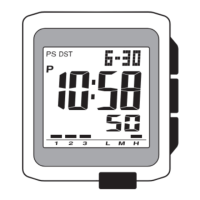
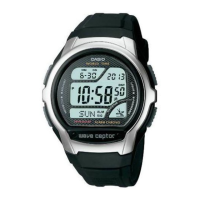
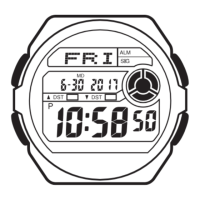
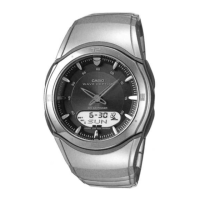


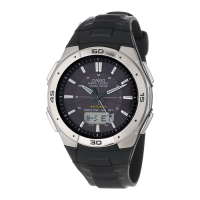




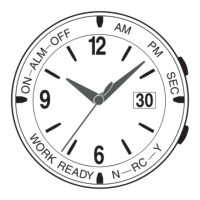
